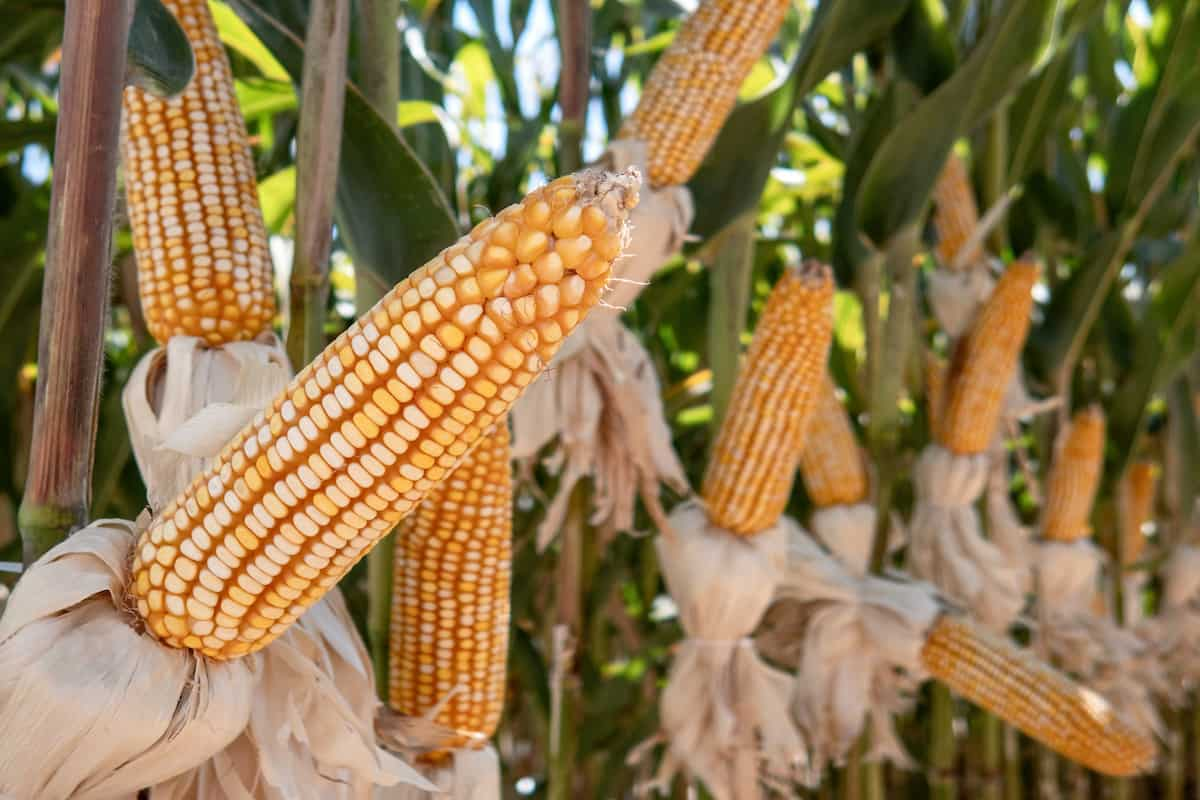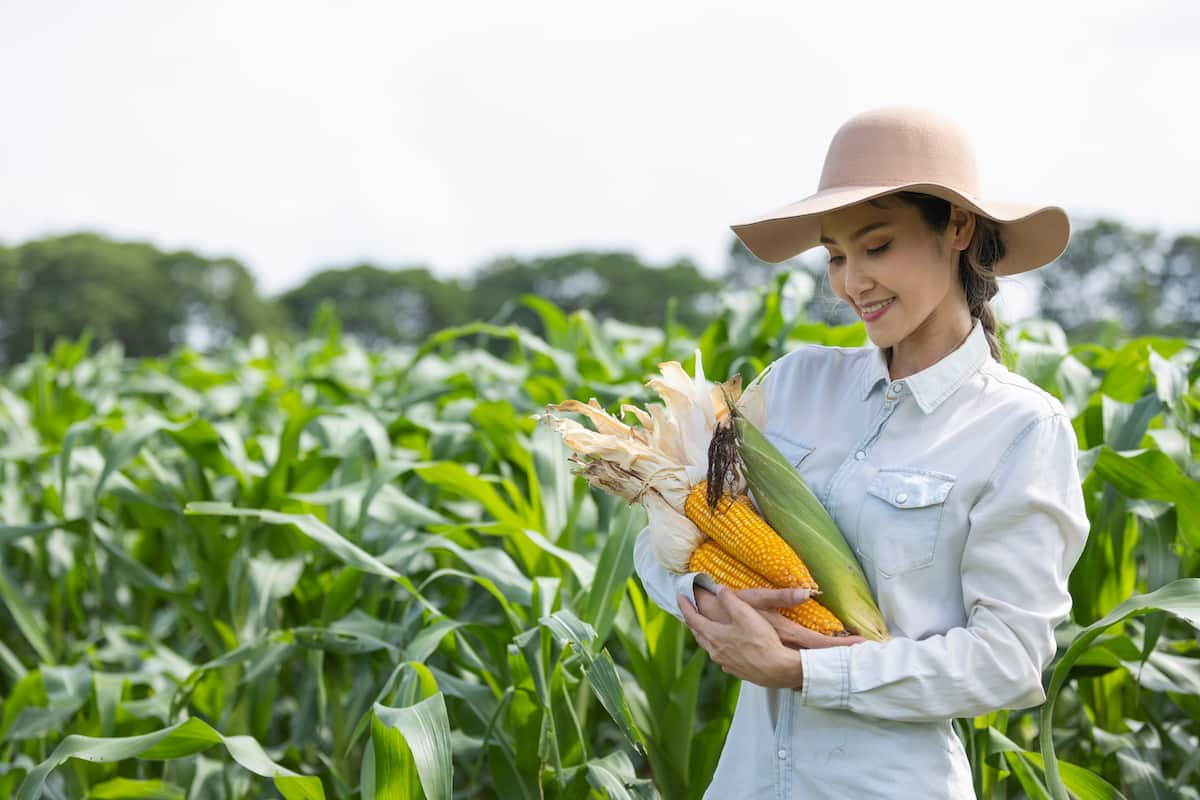Corn farming is a popular agricultural practice in North Carolina, given the state’s suitable climate and fertile soil. Corn production can be profitable for local farmers with its high demand for livestock feed, ethanol production, and human consumption. Here we learn about the steps to start corn farming in North Carolina, covering field preparation, planting, growing, and harvesting.

How to Start Corn Farming in North Carolina
Understand North Carolina’s Climate for Corn Farming
The climate of North Carolina can be described as humid subtropical, with burning summers and mild winters. Corn thrives best in warm temperatures, ideally between 60°F and 90°F. The state’s long growing season and ample rainfall provide favorable conditions for corn farming. However, it is essential to pay attention to the local microclimate and plant corn varieties suited to the specific conditions of your area.
Select the Right Corn Variety
Choosing the right corn variety is crucial in ensuring a successful crop. When selecting a corn variety, consider yield potential, maturity, and disease resistance. For North Carolina, choose varieties with a maturity range of 100-120 days, which allows for optimal growth during the state’s warm growing season.
In North Carolina, farmers can opt for corn varieties like the versatile DeKalb DKC64-35RIB, known for its high yield potential and disease resistance, or the Pioneer P1197YHR, which offers strong stalk strength and excellent drought tolerance. Hybrid varieties resistant to common diseases like Southern corn leaf blight and Southern rust are also recommended.
Field Preparation
Proper field preparation is essential for a successful corn crop. Start by selecting a well-draining field with access to sunlight and water. Test the soil’s pH, nutrient levels, and potential deficiencies. Ideally, corn should be planted in soil with a pH between 6.0 and 6.8. Amend the soil with lime, if necessary, to balance the pH and provide essential nutrients.
Plow the field to break up compacted soil and remove weeds. Deep plowing helps improve soil structure and drainage, while shallow plowing is suitable for fields with a history of good corn production. After plowing, use a disc harrow to break up large clods and create a smooth seedbed.
Fertilization
Corn requires high nitrogen, phosphorus, and potassium levels for optimal growth. Apply a starter fertilizer at planting time, followed by side-dressing with nitrogen during the growing season. Base your fertilization rates on soil test results and the specific nutrient requirements of your chosen corn variety. Follow local extension recommendations for fertilizer application rates and timings.
Planting
Plant corn in North Carolina after the last frost date, typically between mid-April and early May. This timing ensures soil temperatures are warm enough for germination, which requires a minimum of 50°F. Plant corn seeds at a depth of 1.5 to 2 inches, with a row spacing of 30 to 36 inches. Optimal plant populations vary depending on the specific variety and growing conditions but generally range from 28,000 to 32,000 plants per acre.
In case you missed it: How to Start Peanuts Farming in North Carolina: A Step-By-Step Production Guide for Planting to Harvest

Irrigation and Water Management
In North Carolina, the specific irrigation needs for corn farming vary depending on factors such as soil type, rainfall patterns, and corn variety. Generally, corn requires 20 to 24 inches of water throughout the growing season, with the majority of this water demand occurring during critical growth stages, such as germination, pollination, and grain filling. The average yearly rainfall in the state is 42 inches, which is usually enough water for corn.
However, corn may need extra watering during times of drought or when rain falls in different places. It is crucial to monitor soil moisture levels regularly and implement an efficient irrigation system, such as drip or center pivot irrigation, to ensure consistent moisture in the root zone. Proper irrigation scheduling, based on evapotranspiration data and soil moisture measurements, can help optimize water use, improve crop yield, and conserve water resources in North Carolina.
Pest and Disease Management
Corn farming in North Carolina is susceptible to various pests and diseases. Common pests include corn earworms, cutworms, and armyworms, while diseases such as Southern rust, gray leaf spot, and Southern corn leaf blight can also affect corn crops. Rotate crops, maintain proper plant spacing, and remove crop debris to reduce disease incidence. Monitor your fields regularly for signs of pests and diseases and take action as needed, following local extension recommendations for pest and disease management.
Weed Management
Weeds compete with corn for nutrients, water, and sunlight, reducing overall yield potential. Implement a comprehensive weed management plan combining cultural practices, mechanical and chemical control. Start with a clean seedbed and use pre-emergent herbicides to control early-season weeds. Cultivate between rows to remove established weeds and reduce weed pressure. Select post-emergent herbicides based on the specific weeds present in your field and follow label recommendations for application rates and timings.
Pollination
Corn relies on wind pollination for successful reproduction. Each corn plant produces both male (tassel) and female (ear) reproductive structures. Pollen from the tassels must reach the silks on the ear to fertilize the ovules and produce kernels. To ensure adequate pollination, plant corn in blocks of at least four rows rather than single rows or double rows. Avoid planting corn downwind of other tall crops, which can block the wind and reduce pollen movement.
Time Taken from Seed to Harvest
The time from planting to harvesting corn in North Carolina depends on the specific corn variety and the local growing conditions. Generally, corn reaches maturity in 100-120 days. Monitor the corn’s progress throughout the growing season, looking for key growth stages such as tasseling, silk emergence, and kernel development.
Harvesting
Harvest corn when it reaches the desired moisture content for your intended use. For silage, harvest when the whole plant moisture is between 65% and 70%. For grain, harvest when the kernel moisture drops to 15% to 20%. Timely harvesting is crucial to maximize yield and quality. Use a combine harvester to collect the corn, and calibrate the combine settings to minimize kernel loss and damage.
In case you missed it: Discover the Top 11 Fruit Trees Perfect for North Carolina Yards

Conclusion
Corn farming in North Carolina offers promising opportunities for local farmers, thanks to the state’s suitable climate and fertile soils. By following this step-by-step guide and implementing best management practices, you can maximize your corn production and enjoy a successful harvest.
- Feed Your Flock for Less: Top 10 Tips to Save on Chicken Feed
- Ultimate Guide to Ossabaw Island Hog: Breeding, Raising, Diet, and Care
- Hatching Answers: The Top 10 Reasons Your Chickens Aren’t Laying Eggs
- Eggs and Economics: Breaking Down the Cost of Raising Backyard Chickens
- Defend Your Greens: Proven Methods to Keep Iguanas Out of Your Garden
- Ultimate Guide to Cinnamon Queen Chicken: A Comprehensive Guide for Beginners
- Ultimate Guide to California Tan Chicken: Breeding, Raising, Diet, Egg-Production and Care
- Ultimate Guide to Marsh Daisy Chicken: Breeding, Raising, Diet, and Care
- 10 Types of Chicken Farming Businesses You Can Start for Profits